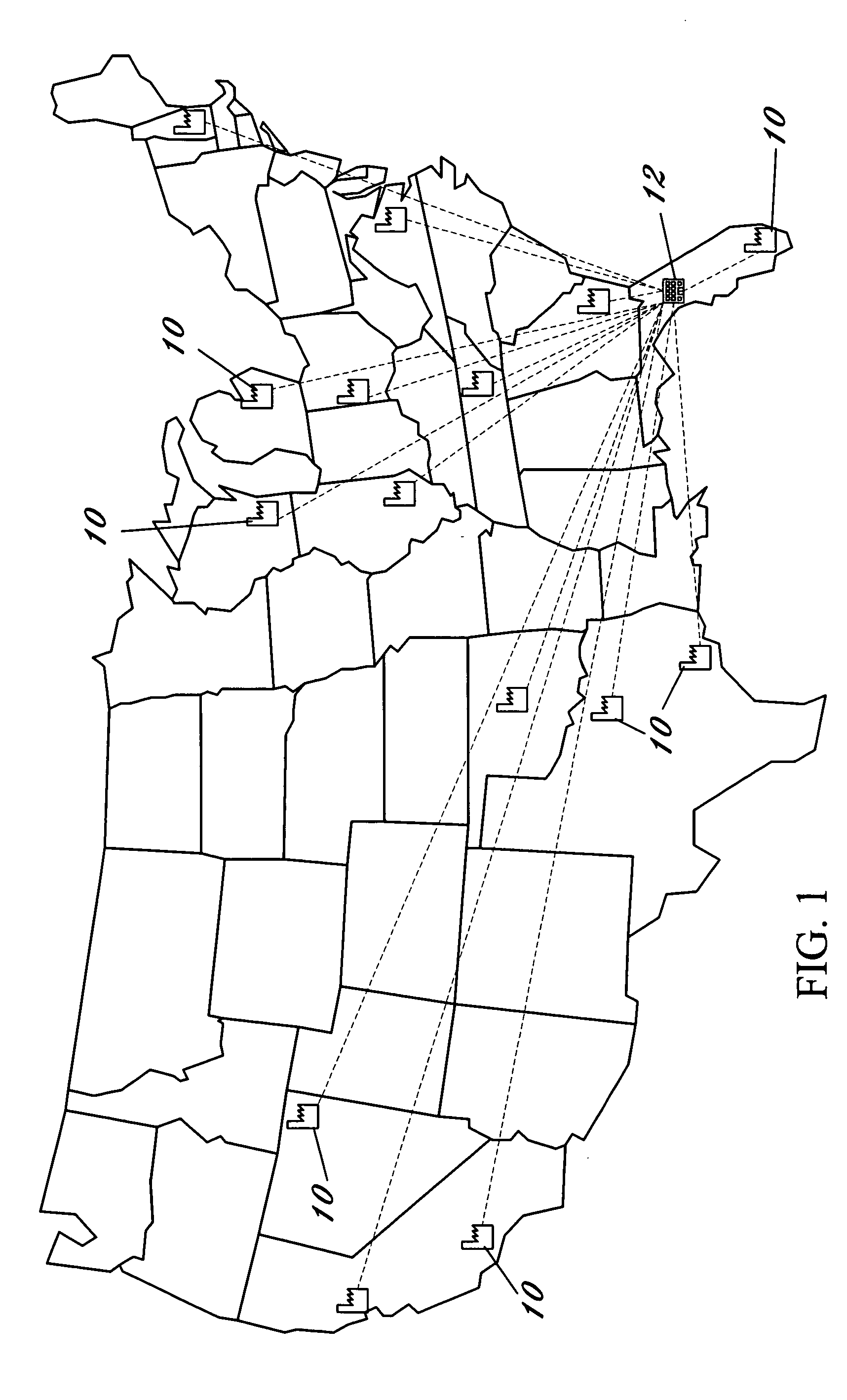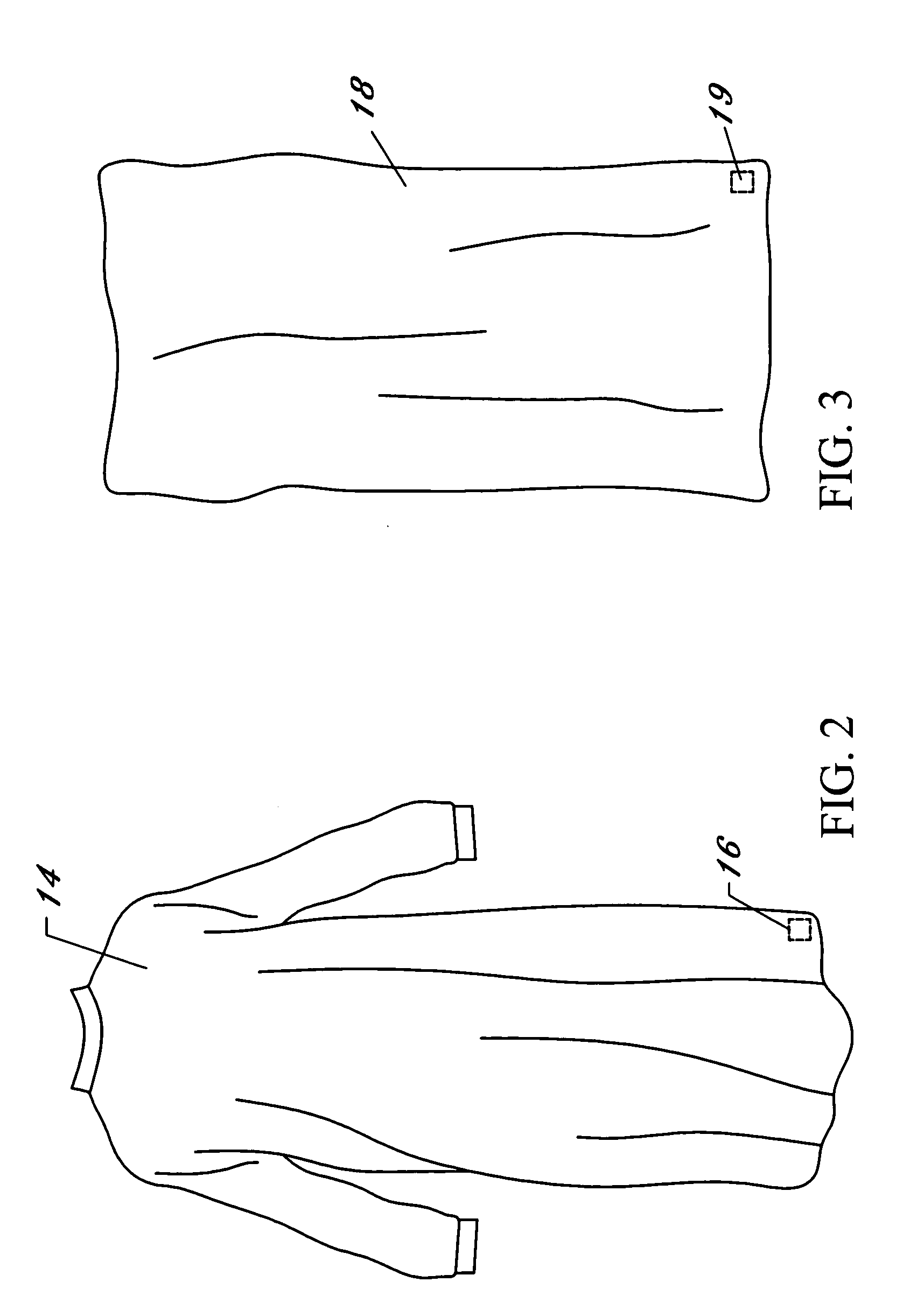Management and distribution of surgical supplies within an RFID enabled network
a technology of rfid and network, applied in the direction of burglar alarm mechanical actuation, instruments, bowling games, etc., can solve the problems of wearer discomfort, hospital and surgical facilities have struggled to manage the supply and processing of surgical supplies, and hospitals simply do not have the facilities necessary to properly clean and sterilize the large number of reusable textiles. , to achieve the effect of reducing labor, avoiding rf interference, and increasing read accuracy
- Summary
- Abstract
- Description
- Claims
- Application Information
AI Technical Summary
Benefits of technology
Problems solved by technology
Method used
Image
Examples
Embodiment Construction
[0032] With reference now to the drawings, FIGS. 1-7 depict a system and method for processing, distributing, and tracking inventory articles in multiple facility distribution network using radio frequency identification (“RFID”). FIG. 1 depicts a multiple facility distribution network wherein a plurality of distribution facilities 10 operate in various geographically remote locations. Each distribution facility 10 electronically communicates with a main office or headquarters, referenced as 12, via a secured wide area computer network. Each distribution facility 10 maintains and distributes an inventory of goods to customers within a specified market, territory, or geographic region. In a preferred embodiment, the goods include medical supplies, and particularly reusable goods such as standard liquid resistant and liquid proof surgical gowns, barrier drapes, liquid proof table covers, towels, mayo instrument stand covers, and equipment draping covers. In an alternate embodiment, th...
PUM
 Login to View More
Login to View More Abstract
Description
Claims
Application Information
 Login to View More
Login to View More - R&D
- Intellectual Property
- Life Sciences
- Materials
- Tech Scout
- Unparalleled Data Quality
- Higher Quality Content
- 60% Fewer Hallucinations
Browse by: Latest US Patents, China's latest patents, Technical Efficacy Thesaurus, Application Domain, Technology Topic, Popular Technical Reports.
© 2025 PatSnap. All rights reserved.Legal|Privacy policy|Modern Slavery Act Transparency Statement|Sitemap|About US| Contact US: help@patsnap.com



